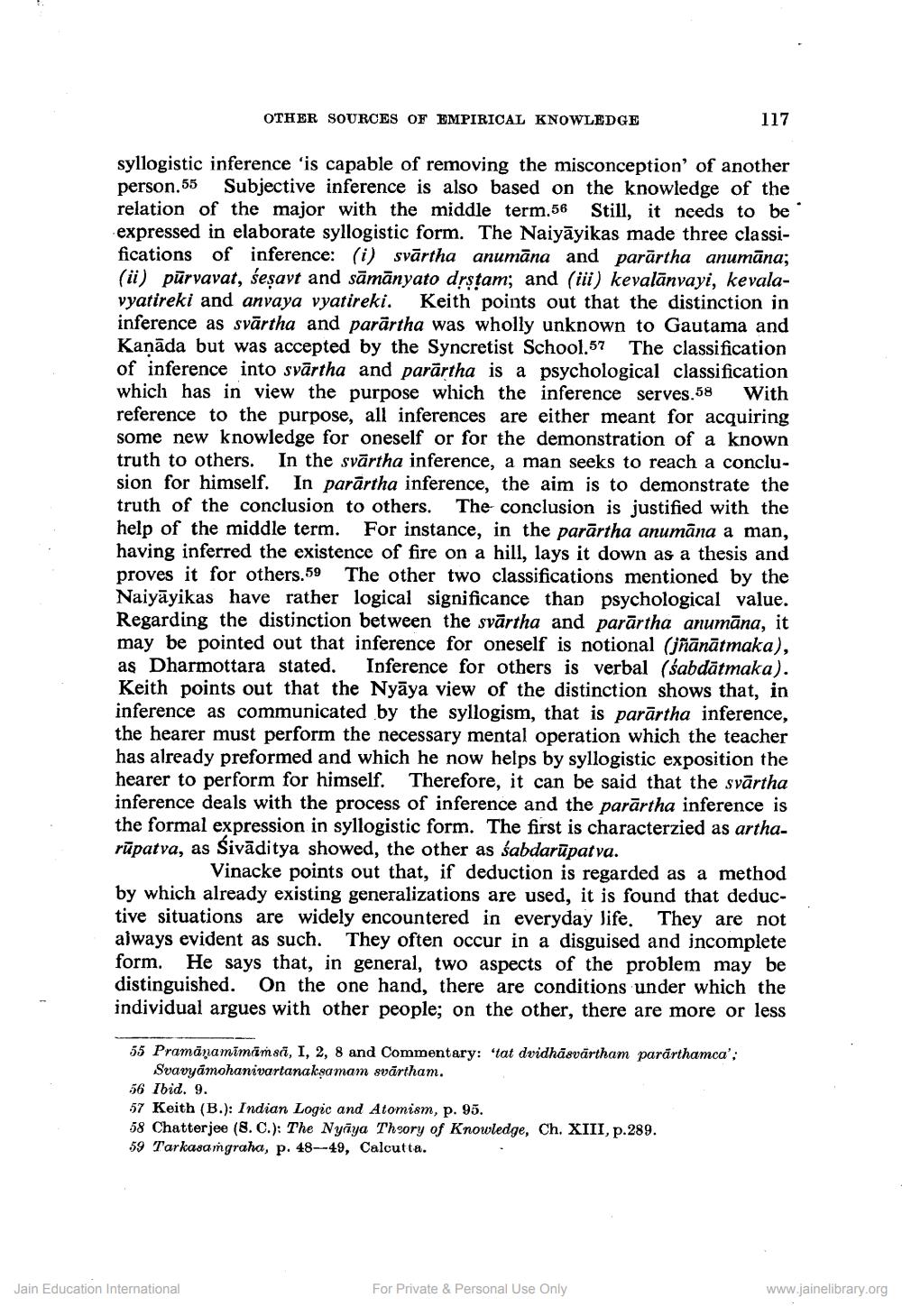________________
OTHER SOURCES OF EMPIRICAL KNOWLEDGE
117
syllogistic inference 'is capable of removing the misconception of another person.55 Subjective inference is also based on the knowledge of the relation of the major with the middle term.56 Still, it needs to be expressed in elaborate syllogistic form. The Naiyāyikas made three classifications of inference: (i) svārtha anumāna and parārtha anumāna; (ii) pūrvavat, seșavt and sāmānyato drstam; and (iii) kevalānvayi, kevalavyatireki and anvaya vyatireki. Keith points out that the distinction in inference as svārtha and parārtha was wholly unknown to Gautama and Kaņāda but was accepted by the Syncretist School.57 The classification of inference into svārtha and parārtha is a psychological classification which has in view the purpose which the inference serves.58 With reference to the purpose, all inferences are either meant for acquiring some new knowledge for oneself or for the demonstration of a known truth to others. In the svārtha inference, a man seeks to reach a conclusion for himself. In parārtha inference, the aim is to demonstrate the truth of the conclusion to others. The conclusion is justified with the help of the middle term. For instance, in the parārtha anumāna a man, having inferred the existence of fire on a hill, lays it down as a thesis and proves it for others.59 The other two classifications mentioned by the Naiyāyikas have rather logical significance than psychological value. Regarding the distinction between the svārtha and parārtha anumāna, it may be pointed out that inference for oneself is notional (jñānātmaka), as Dharmottara stated. Inference for others is verbal (sabdātmaka). Keith points out that the Nyāya view of the distinction shows that, in inference as communicated by the syllogism, that is parārtha inference, the hearer must perform the necessary mental operation which the teacher has already preformed and which he now helps by syllogistic exposition the hearer to perform for himself. Therefore, it can be said that the svārtha inference deals with the process of inference and the parārtha inference is the formal expression in syllogistic form. The first is characterzied as artharūpatva, as Sivāditya showed, the other as sabdarūpatva.
Vinacke points out that, if deduction is regarded as a method by which already existing generalizations are used, it is found that deductive situations are widely encountered in everyday life. They are not always evident as such. They often occur in a disguised and incomplete form. He says that, in general, two aspects of the problem may be distinguished. On the one hand, there are conditions under which the individual argues with other people; on the other, there are more or less
55 Pramäramimämsä, 1, 2, 8 and Commentary: 'tat dvidhäsvärtham pararthamca':
Svavyamohanivartanakşamam svārtham. 56 Ibid. 9. 57 Keith (B.): Indian Logic and Atomism, p. 95. 58 Chatterjee (8. C.): The Nyāya Theory of Knowledge, Ch. XIII, p.289. 59 Tarkasaṁgraha, p. 48--49, Calcutta.
Jain Education International
For Private & Personal Use Only
www.jainelibrary.org




